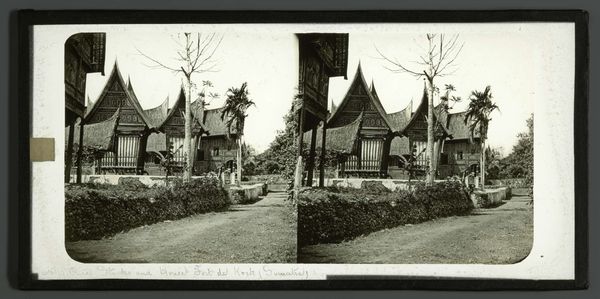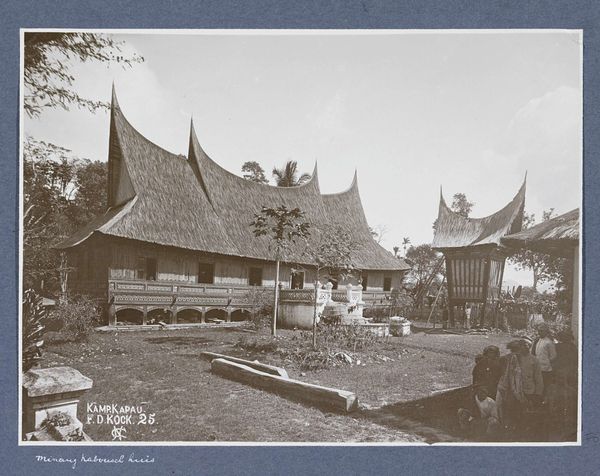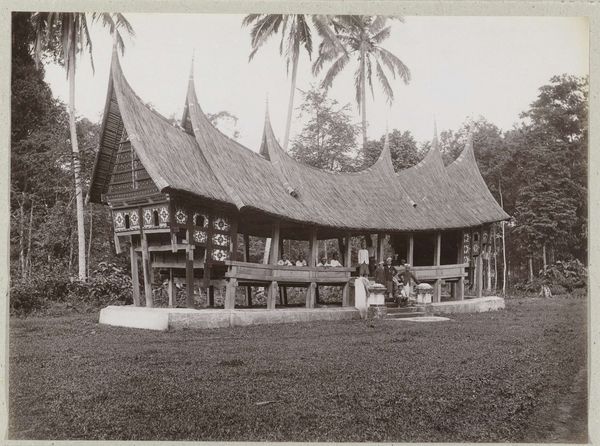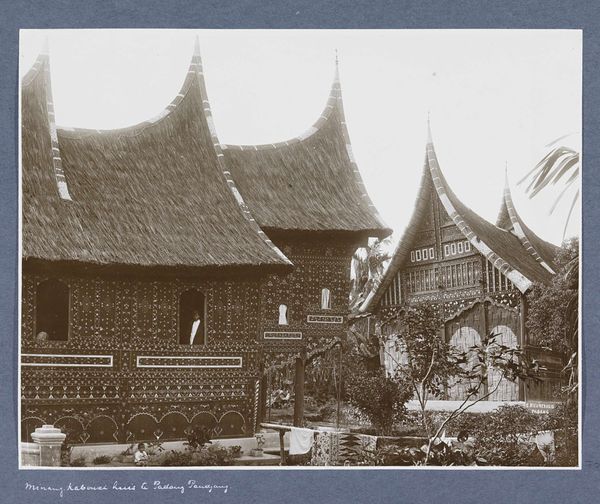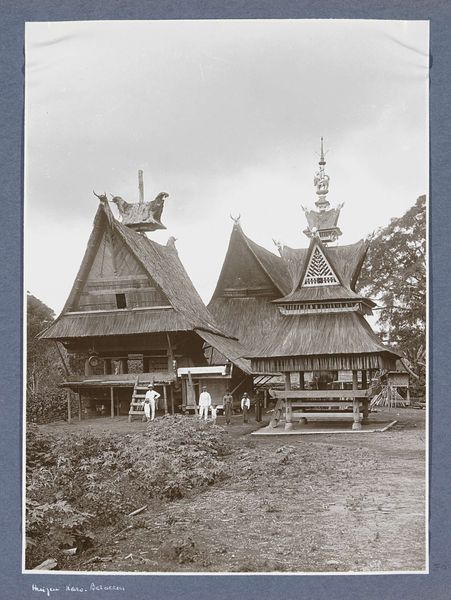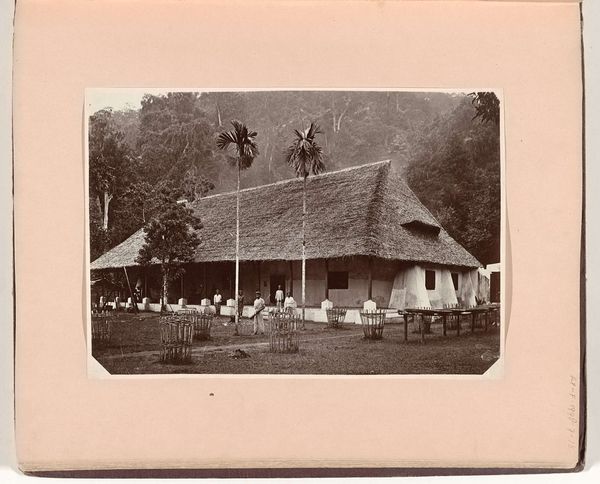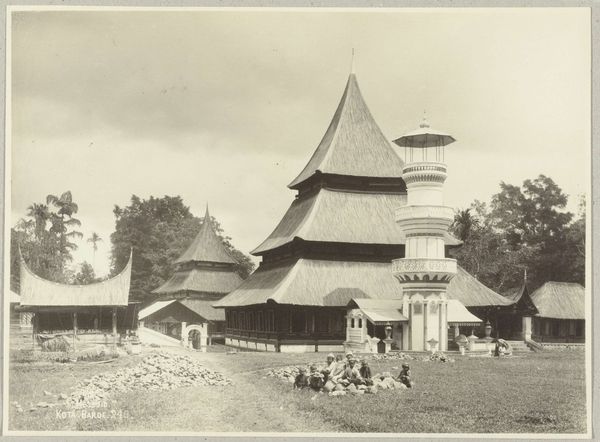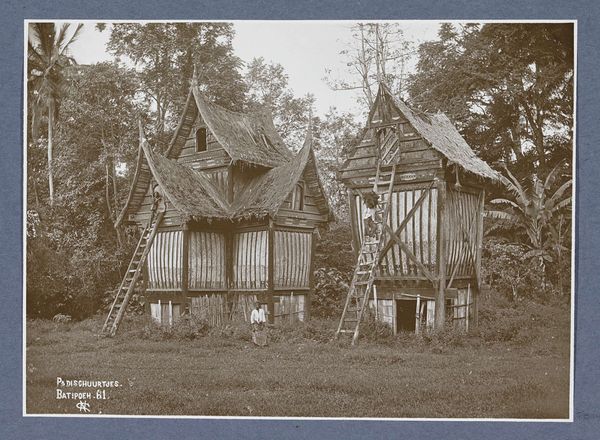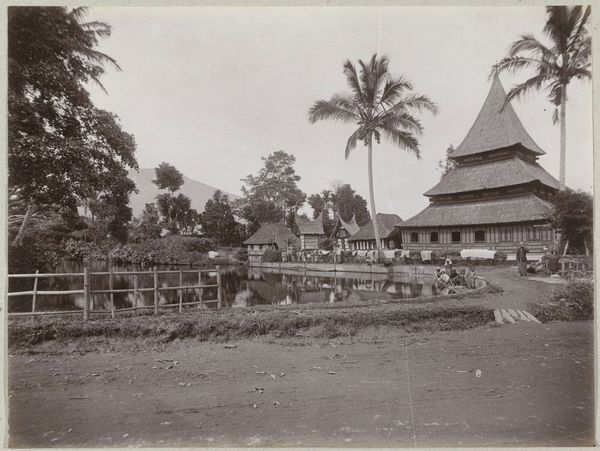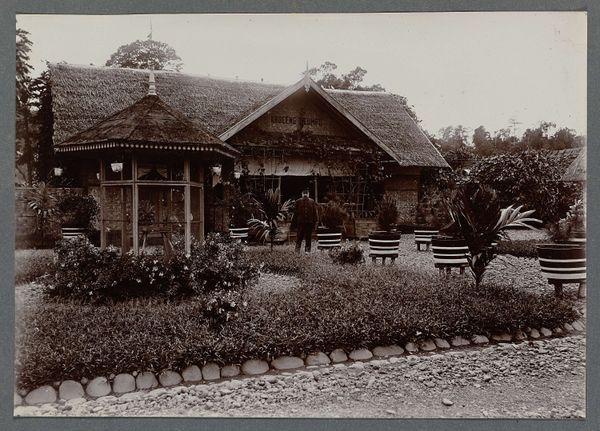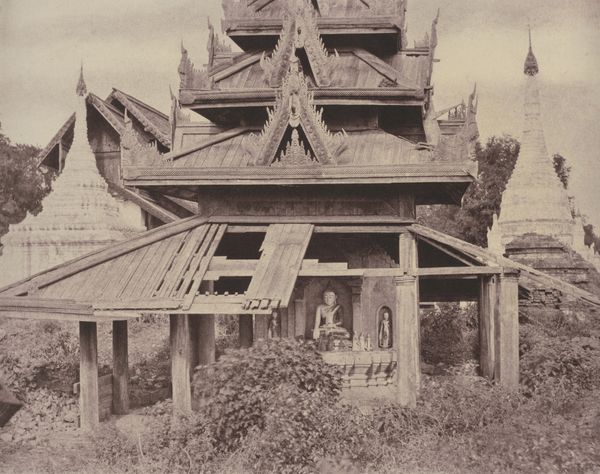
photography, site-specific
#
asian-art
#
landscape
#
photography
#
site-specific
#
cityscape
Dimensions: height 85 mm, width 170 mm
Copyright: Rijks Museum: Open Domain
Editor: This is an albumen print by Woodbury & Page, dating from between 1857 and 1864, titled "Fort de Kock in Bukittinggi, Sumatra," currently held at the Rijksmuseum. The architectural forms are striking, creating an exotic feeling with their sharp peaks. What can you tell me about the cultural and political context of this image? Curator: This image speaks volumes about the Dutch colonial presence in Sumatra during that period. The "Fort de Kock" itself, as a European named location, already points to this. Photography at the time served both as a tool for documentation and a display of power, used to record and disseminate images of colonized lands and peoples back to Europe. Consider, how might the photographer, positioned as an outsider, influence how the location is perceived? Editor: That’s interesting. I hadn’t thought about the perspective embedded within the act of photographing itself. The image seems quite orderly and neat. Is this typical of how colonial powers visually represented their territories? Curator: Absolutely. There was often a deliberate effort to portray colonized spaces as orderly, manageable, and even needing the civilizing influence of the colonizer. It was part of a broader propaganda effort to justify colonial rule. Does the image lead you to question what might be missing or deliberately excluded? Editor: I see what you mean. The image does seem somewhat idealized. Perhaps it excludes the harsh realities and resistance that occurred in the region during this period. It certainly makes me wonder about the agency, or lack thereof, of the local population in these representations. Curator: Exactly. By considering the role of photography in shaping perceptions of colonial spaces, we can start to unpack the complex power dynamics at play. The photo’s circulation contributed to how Europe perceived and justified its interventions in Southeast Asia. Editor: This has definitely broadened my understanding of this photograph, moving beyond just the aesthetic qualities and architectural details. Thanks! Curator: It has for me, too. Now, what else do you see?
Comments
No comments
Be the first to comment and join the conversation on the ultimate creative platform.
